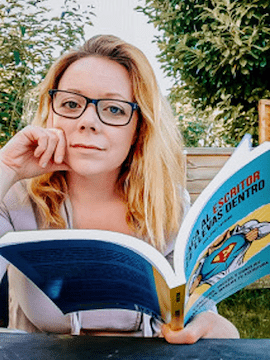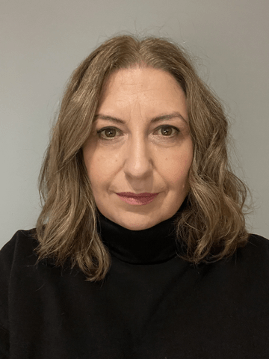In recent years, the importance of inclusive language has become increasingly recognized in the localization industry. Localization companies, translators, and linguistic specialists have been working to ensure their work is gender inclusive and to assist their clients in navigating the challenges of diverse audiences worldwide.
In our recent webinar, “Keeping Your Romance Language Content Inclusive,” Argos Multilingual’s Stephanie Harris welcomed three guests, who each bring a wealth of experience and expertise to the topic of inclusive language. In this context, the term “Romance languages” refers to the group of languages that evolved from Latin and are primarily spoken in Europe, including French, Italian, Portuguese, Romanian, and Spanish. Here, our guests specialize in translation and language services for Romance languages, specifically Portuguese, Italian, and Spanish.
In this article, we summarize the key points made during the webinar and explore more broadly the importance of inclusive language in the localization industry.
Meet our webinar guests:
 Veronica Manzanares is a Spanish translator based in the UK and the founder and CEO of Creative Empowering Services, a feminist translation services provider that specializes in feminism and gender-inclusive language. Veronica has been in the UK for about seven years and started specializing in inclusive language after working as an interpreter for the British healthcare system. Through her work at Creative Empowering Services, Veronica promotes the importance of research journalism, women’s rights, and representation. Veronica’s experience working with women and trans people in the healthcare system has given her a unique perspective on the importance of inclusive language. Veronica Manzanares is a Spanish translator based in the UK and the founder and CEO of Creative Empowering Services, a feminist translation services provider that specializes in feminism and gender-inclusive language. Veronica has been in the UK for about seven years and started specializing in inclusive language after working as an interpreter for the British healthcare system. Through her work at Creative Empowering Services, Veronica promotes the importance of research journalism, women’s rights, and representation. Veronica’s experience working with women and trans people in the healthcare system has given her a unique perspective on the importance of inclusive language.
|
 Monica Campardo is a freelance linguist from Italy with over 20 years of experience in localization. She started her career as a translator and proofreader of software user interfaces and user assistants and now specializes in terminology, quality management, and transcreation of marketing content. Monica has been interested in inclusive language since her university studies in social linguistics, where she explored how gender roles in society affect and shape languages. She understands the linguistic compromises of using non-inclusive language, especially not using gender-neutral language in certain content types. Monica’s experience writing guidelines and helping translation teams has made her acutely aware of the necessity of inclusive language in ensuring that potential customers are not excluded or alienated. Monica Campardo is a freelance linguist from Italy with over 20 years of experience in localization. She started her career as a translator and proofreader of software user interfaces and user assistants and now specializes in terminology, quality management, and transcreation of marketing content. Monica has been interested in inclusive language since her university studies in social linguistics, where she explored how gender roles in society affect and shape languages. She understands the linguistic compromises of using non-inclusive language, especially not using gender-neutral language in certain content types. Monica’s experience writing guidelines and helping translation teams has made her acutely aware of the necessity of inclusive language in ensuring that potential customers are not excluded or alienated.
|
 Mélanie Mós is a freelance translator, transcreator, and copywriter from Portugal who has been writing and translating inclusive content for three years in marketing, hospitality, and sustainability. After attending a class in feminism studies while completing her bachelor’s degree, she became interested in inclusive language and the enormity of the challenge in Portuguese translation. Since then, Mélanie completed a master’s degree, became a freelance translator (from English and French to Portuguese), and concentrated her post-graduate education on inclusive language. She now offers this service to her clients and has successfully created inclusive materials for well-known brands. Mélanie recognizes the importance of inclusive language, particularly in marketing, and meticulously incorporates it into different texts. Mélanie Mós is a freelance translator, transcreator, and copywriter from Portugal who has been writing and translating inclusive content for three years in marketing, hospitality, and sustainability. After attending a class in feminism studies while completing her bachelor’s degree, she became interested in inclusive language and the enormity of the challenge in Portuguese translation. Since then, Mélanie completed a master’s degree, became a freelance translator (from English and French to Portuguese), and concentrated her post-graduate education on inclusive language. She now offers this service to her clients and has successfully created inclusive materials for well-known brands. Mélanie recognizes the importance of inclusive language, particularly in marketing, and meticulously incorporates it into different texts. |
Key Challenges in Romance Languages
The characteristics of Romance languages bring unique challenges for inclusive content, especially in gender-neutral language.
Portuguese is a particularly challenging language, said Mélanie, because every adjective and noun has a gender. The language has both formal and informal forms and, thus, presents additional complications – gender neutrality is harder to achieve in the formal form and it is still the preferred form for some, especially older generations.
Italian is gender-biased, said Monica, highlighting that the masculine is commonly used as a default for both (binary) genders. Italian does not allow for the representation of individuals who do not identify with a binary gender.
While, as Veronica noted, Spanish already uses three main endings to denote inclusivity – namely -e, -x, and the @ symbol – these are not without additional difficulties. For example, the @ symbol creates confusion when used on social media, where it has other uses, or leads to incomprehension when not recognized by screen readers, devices used by people with sight problems. Additionally, said Veronica, some professions like “doctor” and “nurse” are traditionally denoted masculine or feminine, which makes it difficult to achieve inclusivity in language.
Best approaches for creating inclusivity
Recognizing these challenges is not the same as addressing them. So the webinar’s chat moved to examine how translation teams and their clients can tackle the problem.
Sometimes, as Mélanie noted, the best approach to creating inclusive content is to do nothing at all. That is, transcreation may offer opportunities to avoid gender references all together, for example, by rephrasing the sentence or not using clichés, while still conveying the same meaning. By selecting seemingly inclusive options, like the aforementioned use of the @ symbol or using o/a, you may unintendedly contribute to the exclusion of nonbinary persons or people with visual impairments or, as she later added, hurt the text’s readability.
Even addressing nationality may fall into gender traps. Instead of the gendered nationality version (e.g., Portuguese or Spanish), said Veronica, list the name of the country (Portugal or Spain). Important, she added, is to choose a path that is both easy to read and that does not use the “masculine generic” by default.
[form_newsletter]
While avoiding gender references or selecting neutral phrasing are promising approaches, concurred Monica, she stressed that working closely with clients is vital. Clients must analyze the content type being translated and consider the audience. For example, diversity, equity, and inclusion concerns are clear priorities in the translation of HR training content. In the translation of user interfaces, by contrast, space restrictions may dictate how things are (re)phrased. The audience also matters in this. If, for example, the brand wants to target a very young Italian audience and wants to include nonbinary gender identities, they might consider using innovative solutions in the translation, like adding neutral suffixes or pursuing experimental solutions like using the @ symbol or the schwa. Speak with your clients about how their choices may help or hurt their brand, said Monica, and guide them in solutions that meet their current requirements while also setting guidelines for future projects.
Setting the Stage for the Future
As noticed here at Argos, Stephanie shared, clients are increasingly aware themselves of the need for an “inclusivity check” before content is published. That is already a promising development and means more are speaking the same language regarding the costs and opportunities of inclusive content initiatives. The webinar guests added their insights on what else is being won by the effort.
People want to use inclusive language, said Mélanie, even if they are not sure how to do it. There is a shift towards informality in her generation and younger generations, she said, which makes her optimistic about using an informal tone of voice that is more gender-neutral. In television advertising in Portugal, for example, Mélanie has already noticed that brands are making this shift. Although using gender-neutral language may seem challenging at first, said Mélanie, people will eventually accept it if it is introduced gradually and naturally.

Monica agreed with Mélanie’s optimistic view of the future of inclusive language. She has seen changes in Italian and believes that people are writing and speaking more inclusively. She mentioned a major change announced by Treccani, the publisher of one of the leading Italian dictionaries. In forthcoming editions, its dictionary will list all entries alphabetically and have both feminine and masculine forms for nouns and adjectives. While there is still a long way to go, and it only recognizes a binary representation of gender, Monica sees this change as a major step towards equal visibility and status for both feminine and masculine forms in Italian.
Veronica acknowledged that while positive changes are being made in language and society, a large group of people still consider the traditional binary gender representation as the only valid option and are against using inclusive language for political reasons. Promoting access to information about inclusive language in every language is important, she recommended. So too, is asking linguists if they are comfortable working with inclusive language and ensuring their access to training and resources. She also emphasized the importance of authenticity in the effort. Brands that use inclusive language should be ready to defend their initiative – no pretense.
“Keeping Your Romance Language Content Inclusive” is the third of our series of webinars on D&I content strategy. We welcome your engagement and your feedback! Write to us at insights@argosmutlingual.com”
 Argos Multilingual
2 min. read
Argos Multilingual
2 min. read
Press Release: Argos Multilingual, a leading global language solutions provider, is proud to announce that it has achieved a Silver-level sustainability rating from EcoVadis. This rating is based on four pillars of environmental, labor practices, fair business practices and sustainable procurement. “We are thrilled to receive this recognition from EcoVadis,” said Véronique Özkaya, CEO of […]

 Brittany Gouze
6 min. read
Brittany Gouze
6 min. read
When businesses need to deliver content to their audiences around the globe and are concerned with maintaining the meaning and tone of their messages, they seek the help of localization professionals to get the job done. Localization, whether it be software, website, legal, life sciences, or eLearning content, can get complex. After all, you’ve got […]











